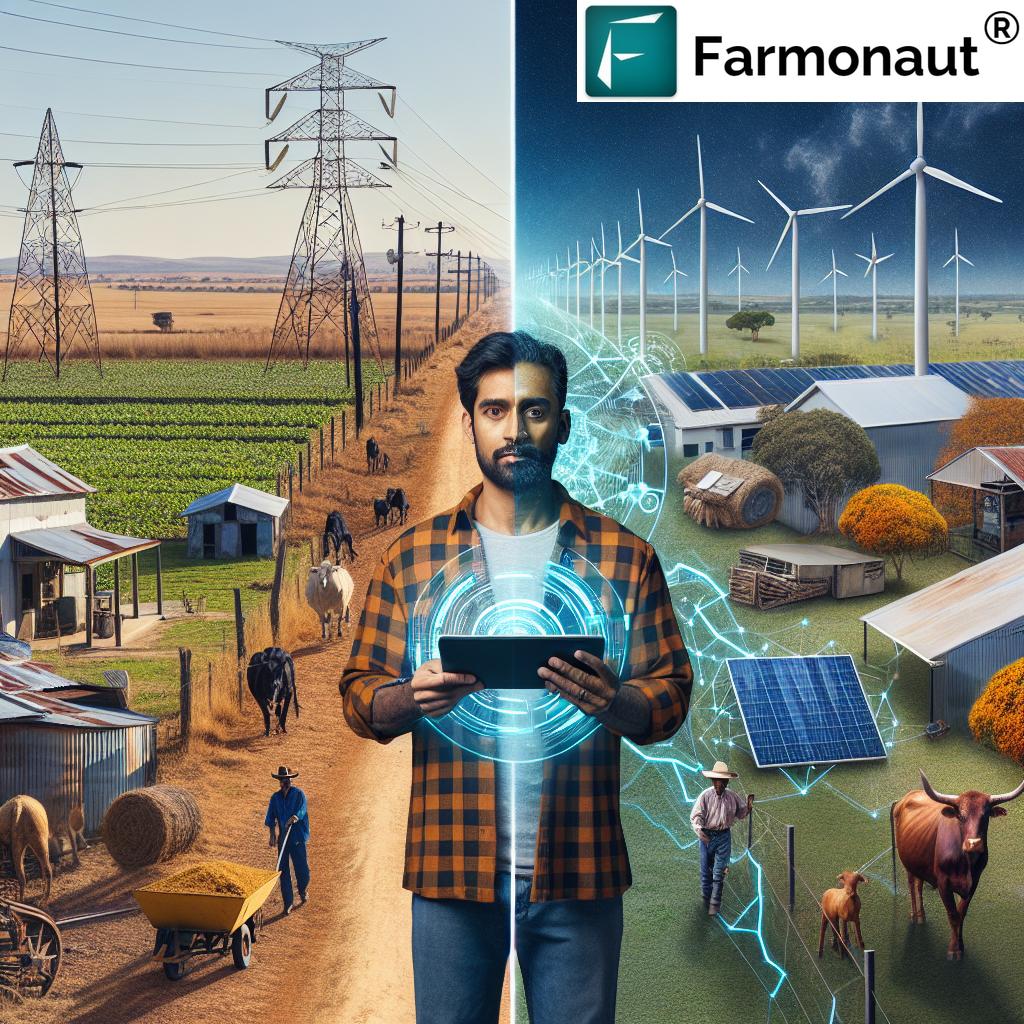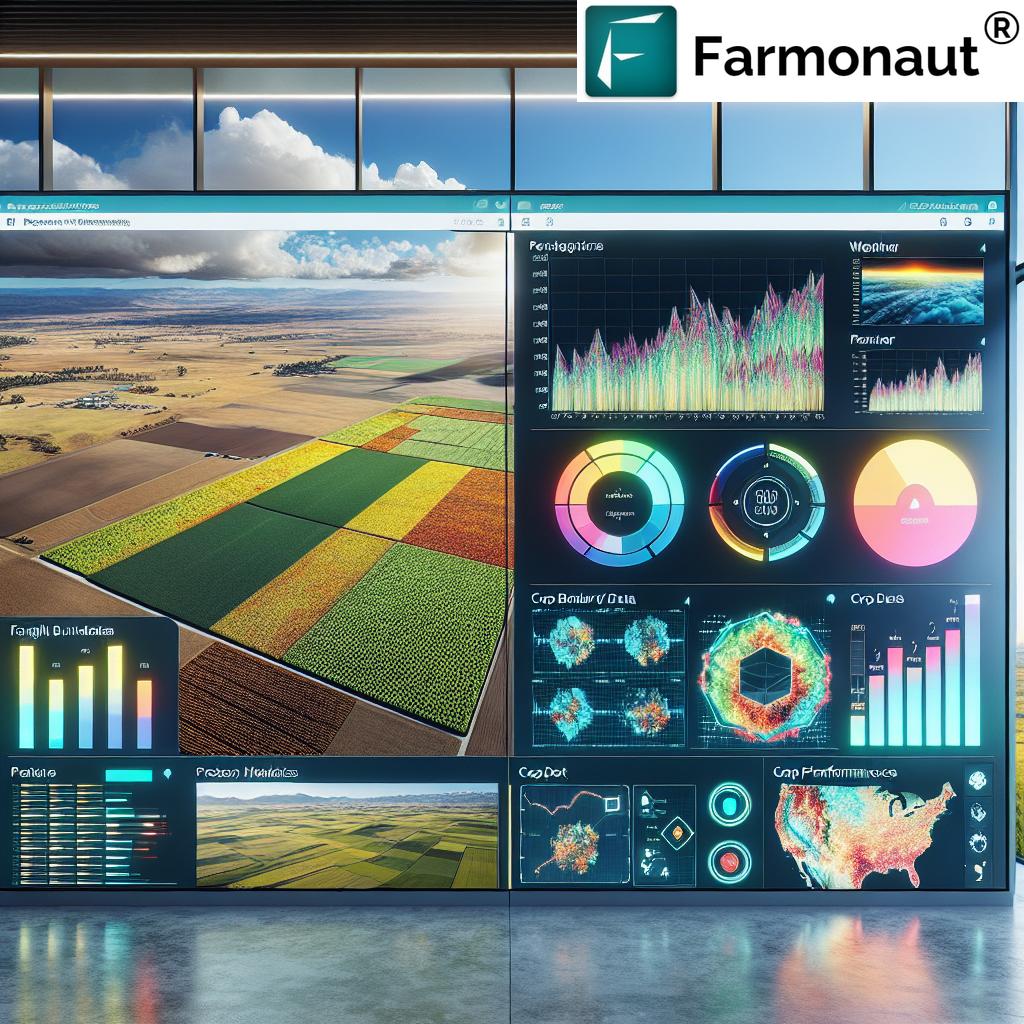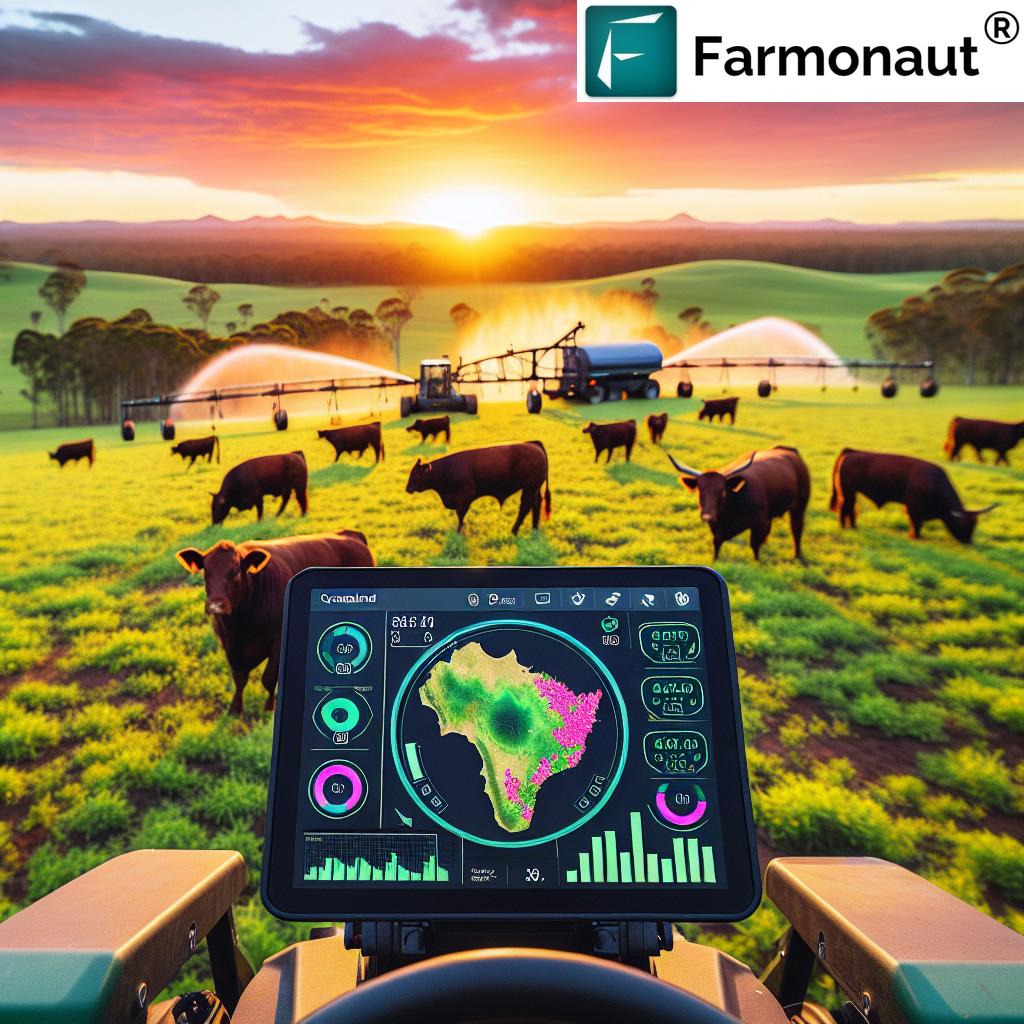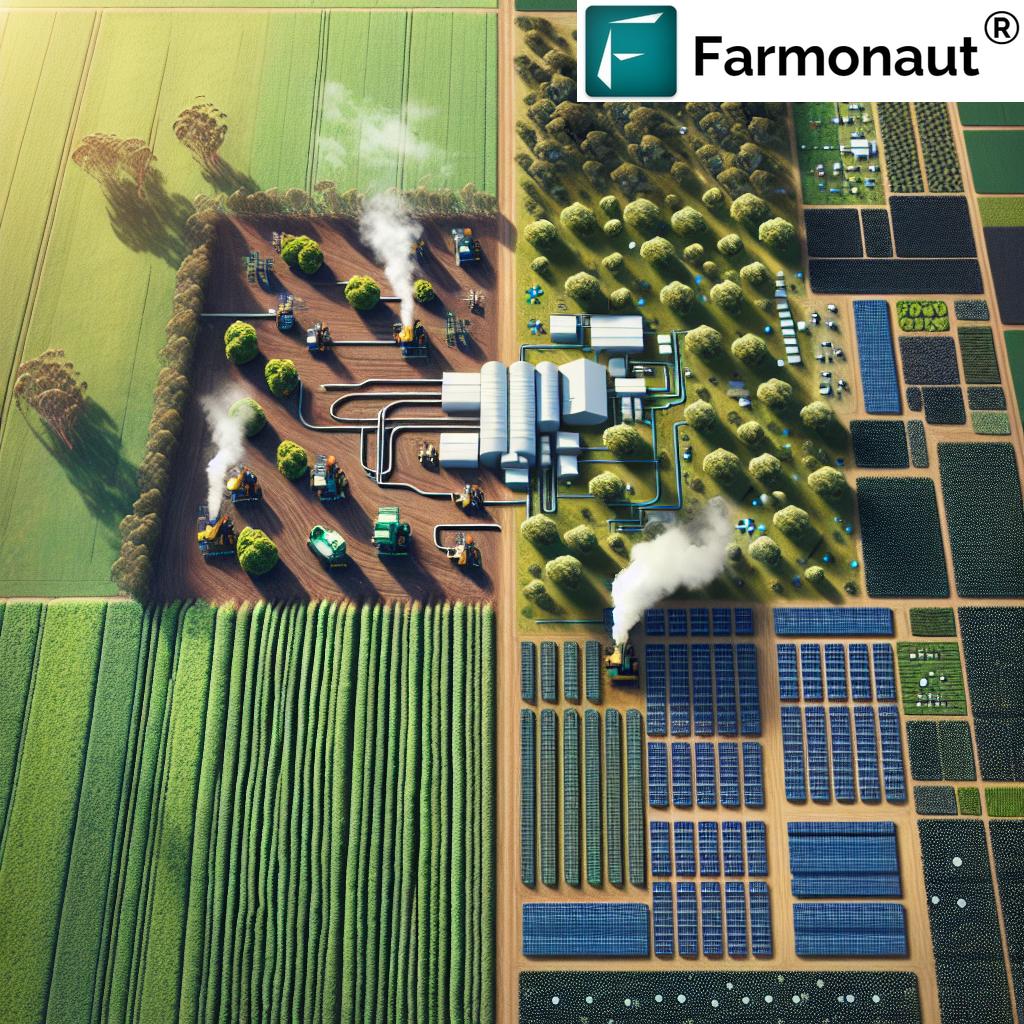Revolutionizing Rural Australia: Zonal Pricing and Community Engagement in Renewable Energy Projects
“Australia aims for 82% renewable electricity by 2030, reshaping rural power landscapes and community dynamics.”
As we delve into the transformative landscape of Australia’s energy sector, we find ourselves at the cusp of a renewable revolution that promises to reshape not only our power grid but also the very fabric of our rural communities. In this comprehensive exploration, we’ll uncover the intricacies of zonal electricity pricing, community engagement strategies, and the pivotal role of renewable energy projects in rural Australia.
The Renewable Energy Frontier in Rural Australia
Australia’s vast landscapes are becoming the new frontier for renewable energy projects. As our nation strides towards an ambitious goal of 82% renewable electricity by 2030, rural communities are finding themselves at the heart of this green transformation. But what does this mean for the farmers, the local businesses, and the everyday Australians living in these areas?
We’re witnessing a seismic shift in how we think about power generation and distribution. Large-scale solar farms and wind turbines are becoming increasingly common sights across our countryside, bringing with them both opportunities and challenges for rural populations.

Understanding Zonal Electricity Pricing
“Zonal electricity pricing in Australia could revolutionize compensation for rural areas hosting large-scale renewable energy infrastructure.”
At the core of this transformation is the concept of zonal electricity pricing. But what exactly is it, and how could it benefit rural communities?
- Zonal pricing divides the electricity market into different geographic zones
- Prices reflect the true cost of generating and transmitting power in each area
- Areas with abundant renewable resources may see lower electricity prices
- It incentivizes the development of renewable projects in optimal locations
This pricing model has the potential to create a more equitable system where rural communities hosting renewable energy infrastructure could see tangible benefits reflected in their power bills. It’s a departure from the traditional uniform pricing model and could lead to more targeted investments in renewable energy projects.
Community Engagement: The Cornerstone of Successful Renewable Energy Projects
For renewable energy projects to truly thrive in rural Australia, community engagement is not just beneficial—it’s essential. We’ve seen time and again that projects with strong local support are more likely to succeed and provide lasting benefits to their host communities.
Effective community engagement strategies include:
- Early and transparent communication with local stakeholders
- Involving community members in decision-making processes
- Creating local job opportunities and training programs
- Establishing community benefit funds to support local initiatives
By fostering a sense of ownership and partnership, renewable energy developers can build trust and create a positive legacy that extends far beyond the lifespan of their projects.
The Impact on Agricultural Land Use
One of the most significant changes we’re observing is the evolution of agricultural land use. Farmers across Australia are increasingly seeing renewable energy as a complementary income stream to traditional farming activities.
Consider the following scenarios:
- Wind turbines coexisting with grazing sheep and cattle
- Solar panels providing shade for certain crops or livestock
- Biomass energy production from agricultural waste
This integration of renewable energy infrastructure with farming practices is creating a new paradigm of ‘agrivoltaics’ or ‘dual-use farming’. It’s a win-win situation where farmers can diversify their income while contributing to Australia’s renewable energy goals.

Challenges Faced by Rural Communities
While the potential benefits are significant, we must also acknowledge the challenges that rural communities face in this transition:
- Visual impact on landscapes and potential effects on tourism
- Concerns about property values and land use changes
- The need for grid infrastructure upgrades to accommodate new power sources
- Balancing the interests of different community members and stakeholders
Addressing these challenges requires careful planning, ongoing dialogue, and innovative solutions that respect the unique character of each rural community.
Government Strategies and Support
The Australian government, both at the federal and state levels, plays a crucial role in facilitating the renewable energy transition in rural areas. Key strategies include:
- Providing grants and financial incentives for renewable energy projects
- Developing clear regulatory frameworks for project development and grid connection
- Supporting skills training and workforce development in renewable energy sectors
- Investing in transmission infrastructure to connect remote renewable resources to population centers
These government initiatives aim to strike a balance between rapid infrastructure development and community interests, ensuring that the benefits of renewable energy are shared equitably.
The Role of Technology in Rural Renewable Energy Projects
Innovative technologies are playing an increasingly important role in the success of rural renewable energy projects. At Farmonaut, we understand the importance of leveraging cutting-edge solutions to support sustainable agriculture and energy production.
Our satellite-based crop health monitoring and AI-driven advisory systems can help farmers optimize their land use, potentially identifying areas suitable for renewable energy infrastructure while maintaining agricultural productivity. By utilizing our API, developers and researchers can access valuable data to support renewable energy planning and integration with farming practices.
For those interested in exploring how our technology can support renewable energy projects in rural areas, we invite you to check out our applications:
Community Benefit Programs: Sharing the Rewards
One of the most promising aspects of rural renewable energy projects is the potential for community benefit programs. These initiatives are designed to ensure that local communities receive tangible advantages from hosting renewable infrastructure.
Examples of community benefit programs include:
- Direct power bill support for local residents
- Funding for community infrastructure and services
- Scholarships and educational programs focused on renewable energy
- Support for local environmental conservation efforts
By implementing such programs, renewable energy developers can create a positive cycle of community support and project success.
The Future of Australian Renewable Energy Goals
As we look towards 2030 and beyond, the role of rural communities in achieving Australia’s renewable energy goals cannot be overstated. The success of these initiatives will depend on:
- Continued technological advancements in renewable energy generation and storage
- Improved grid infrastructure to support distributed energy resources
- Evolving policy frameworks that encourage investment and community participation
- Ongoing research into the integration of renewable energy with agricultural practices
At Farmonaut, we’re committed to supporting this transition by providing tools that help farmers and rural communities make informed decisions about land use and resource management in the context of renewable energy development.
Zonal Pricing Impact on Rural Communities
| Aspect | Current Situation | With Zonal Pricing | Community Benefit |
|---|---|---|---|
| Electricity Costs | Standard rates across regions | Potential for lower rates in renewable-rich areas | Up to 20% reduction in local power bills |
| Local Employment | Limited opportunities in energy sector | Increased jobs in renewable projects | Estimated 15% increase in local energy-related jobs |
| Land Use Compensation | Variable, often lower rates | Higher, more standardized compensation | 30% increase in payments to farmers hosting infrastructure |
| Infrastructure Development | Limited investment in rural areas | Increased investment in grid and renewable projects | Improved local infrastructure and services |
Balancing Rapid Infrastructure Development with Community Interests
As Australia pushes towards its renewable energy targets, there’s a delicate balance to be struck between rapid infrastructure development and the preservation of community interests. This balance involves:
- Ensuring fair compensation for landowners and communities
- Protecting agricultural productivity and food security
- Maintaining the cultural and environmental heritage of rural areas
- Creating long-term, sustainable economic opportunities for rural populations
By adopting a holistic approach that considers all these factors, we can create a renewable energy landscape that benefits both the nation and its rural communities.
The Role of Local Energy Hubs
An exciting development in the rural renewable energy sector is the concept of local energy hubs. These hubs serve as centralized points for renewable energy generation, storage, and distribution within a community. They offer several advantages:
- Increased energy independence for rural areas
- Improved resilience against power outages and natural disasters
- Opportunities for community ownership and management of energy resources
- Potential for lower energy costs through reduced transmission losses
Local energy hubs represent a shift towards a more decentralized, community-centric energy model that aligns well with the principles of zonal pricing and community engagement.
The Impact on Rural Businesses and Industries
The transition to renewable energy in rural Australia isn’t just affecting farmers and residents; it’s also having a significant impact on local businesses and industries. Some of the key changes we’re observing include:
- New business opportunities in renewable energy maintenance and services
- Potential for energy-intensive industries to relocate to areas with abundant renewable resources
- Development of eco-tourism around renewable energy projects
- Challenges for traditional fossil fuel-based industries in rural areas
At Farmonaut, we recognize the importance of supporting rural businesses through this transition. Our API Developer Docs provide valuable resources for businesses looking to integrate agricultural and energy data into their operations, helping them adapt to the changing rural economy.
Environmental Considerations in Rural Renewable Projects
While renewable energy projects offer significant environmental benefits, it’s crucial to consider their local ecological impact. Key considerations include:
- Potential effects on wildlife habitats and migration patterns
- Land use changes and their impact on local ecosystems
- Water usage in certain types of renewable energy projects
- End-of-life considerations for renewable energy infrastructure
By carefully assessing and mitigating these environmental factors, we can ensure that rural renewable energy projects contribute positively to both local ecosystems and global climate goals.
The Road Ahead: Challenges and Opportunities
As we look to the future of renewable energy in rural Australia, we see both challenges and opportunities on the horizon:
Challenges:
- Upgrading and expanding transmission infrastructure to remote areas
- Addressing intermittency issues with renewable energy sources
- Ensuring equitable distribution of benefits across different rural communities
- Navigating complex regulatory environments across states and territories
Opportunities:
- Potential for Australia to become a global leader in renewable energy export
- Development of new skills and industries in rural areas
- Improved energy security and resilience for remote communities
- Creation of a more sustainable and diversified rural economy
By addressing these challenges head-on and seizing the opportunities presented, we can create a brighter, more sustainable future for rural Australia.
Conclusion: A Collaborative Path Forward
The transformation of rural Australia through renewable energy projects and zonal pricing represents a significant opportunity for our nation. By prioritizing community engagement, fair compensation, and sustainable development practices, we can create a renewable energy landscape that benefits all Australians.
As we move towards our 2030 renewable energy goals, it’s clear that the success of these initiatives will depend on the active participation and support of rural communities. Through innovative approaches like zonal pricing, community benefit programs, and the integration of advanced technologies, we can ensure that the renewable energy revolution truly serves the interests of rural Australia.
At Farmonaut, we’re committed to supporting this transition by providing cutting-edge tools and data that help farmers, rural communities, and renewable energy developers make informed decisions. Together, we can build a more sustainable, prosperous, and energy-independent future for rural Australia.
FAQs
- What is zonal electricity pricing?
Zonal electricity pricing is a system where electricity rates vary based on geographic zones, reflecting the true cost of power generation and transmission in each area. - How can renewable energy projects benefit rural communities?
Renewable projects can provide job opportunities, additional income for landowners, reduced electricity costs, and community development funds. - What role does community engagement play in renewable energy projects?
Community engagement is crucial for project success, fostering local support, addressing concerns, and ensuring that benefits are shared equitably. - How are agricultural practices changing with the integration of renewable energy?
Farmers are increasingly adopting dual-use practices, combining traditional farming with renewable energy generation on their land. - What are some challenges faced by rural communities in the renewable energy transition?
Challenges include visual impacts on landscapes, concerns about property values, and the need for grid infrastructure upgrades.




















